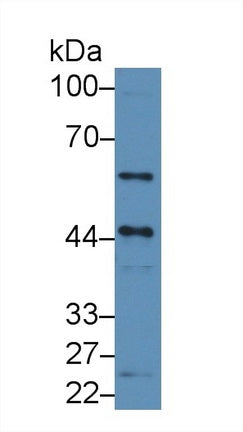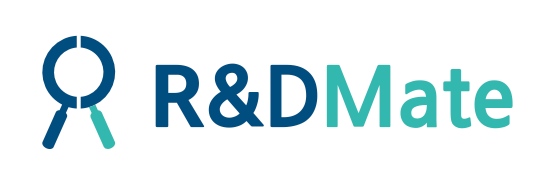Cloud-clone
SKU(재고 관리 코드):PAA040Hu01
Polyclonal Antibody to Chemokine C-X3-C-Motif Ligand 1 (CX3CL1)
Polyclonal Antibody to Chemokine C-X3-C-Motif Ligand 1 (CX3CL1)
Immunohistochemistry: 5-20µg/mL;1:25-100
Immunocytochemistry: 5-20µg/mL;1:25-100
Optimal working dilutions must be determined by end user.
Product No.
PAA040Hu01
Organism Species
Homo sapiens (Human).
Source
Polyclonal antibody preparation
Host
Rabbit
Potency
n/a
Ig Type
IgG
Purification
Antigen-specific affinity chromatography followed by Protein A affinity chromatography
Label
None
Immunogen
n/a
Buffer Formulation
PBS, pH7.4, containing 0.01% SKL, 1mM DTT, 5% Trehalose and Proclin300.
Traits
Liquid
Concentration
500µg/mL
Organism Species More
n/a
Applications
WB; IHC; ICC; IP.
If the antibody is used in flow cytometry, please check FCM antibodies.
UOM
20µl 100µl 200µl 1ml 10ml
SPECIFITY
The antibody is a rabbit polyclonal antibody raised against CX3CL1. It has been selected for its ability to recognize CX3CL1 in immunohistochemical staining and western blotting.
USAGE
Western blotting: 0.2-2µg/mL;1:250-2500
Immunohistochemistry: 5-20µg/mL;1:25-100
Immunocytochemistry: 5-20µg/mL;1:25-100
Optimal working dilutions must be determined by end user.
STORAGE
Store at 4°C for frequent use. Stored at -20°C in a manual defrost freezer for two year without detectable loss of activity. Avoid repeated freeze-thaw cycles.
STABILITY
The thermal stability is described by the loss rate. The loss rate was determined by accelerated thermal degradation test, that is, incubate the protein at 37°C for 48h, and no obvious degradation and precipitation were observed. The loss rate is less than 5% within the expiration date under appropriate storage condition.
| Magazine | Citations |
| World Journal of Gastroenterology | Preliminary study correlating CX3CL1/CX3CR1 expression with gastric carcinoma and gastric carcinoma perineural invasion NCBI: PMC3989981 |
| International Journal of Colorectal Disease | Downregulation of CX3CR1 ameliorates experimental colitis: evidence for CX3CL1-CX3CR1-mediated immune cell recruitment. pubmed:27942903 |
| Frontiers in Cellular and Infection Microbiology | Reduced CX3CL1 Secretion Contributes to the Susceptibility of Oral Leukoplakia-Associated Fibroblasts to Candida albicans. pubmed:27891323 |
| Blood Coagul Fibrinolysis | Low shear stress upregulates the expression of fractalkine through the activation of mitogen-activated protein kinases in endothelial cells Pubmed:29406386 |
| Journal of Neuroinflammation | The prenatal challenge with lipopolysaccharide and polyinosinic: polycytidylic acid disrupts CX3CL1-CX3CR1 and CD200-CD200R signalling in the brains of … Pubmed: 32829711 |
| Cells | Maternal Immune Activation Sensitizes Male Offspring Rats to Lipopolysaccharide-Induced Microglial Deficits Involving the Dysfunction of CD200–CD200R and … Pubmed: 32664639 |
| Journal of Neuroinflammation | CX3CR1-microglia mediates neuroinflammation and blood pressure regulation in the nucleus tractus solitarii of fructose-induced hypertensive rats Pubmed: 32532282 |
| JOURNAL OF PERIODONTAL RESEARCH | Potential biomarkers reflecting inflammation in patients with severe periodontitis: Fractalkine (CX3CL1) and its receptor (CX3CR1) 33641164 |
Share


